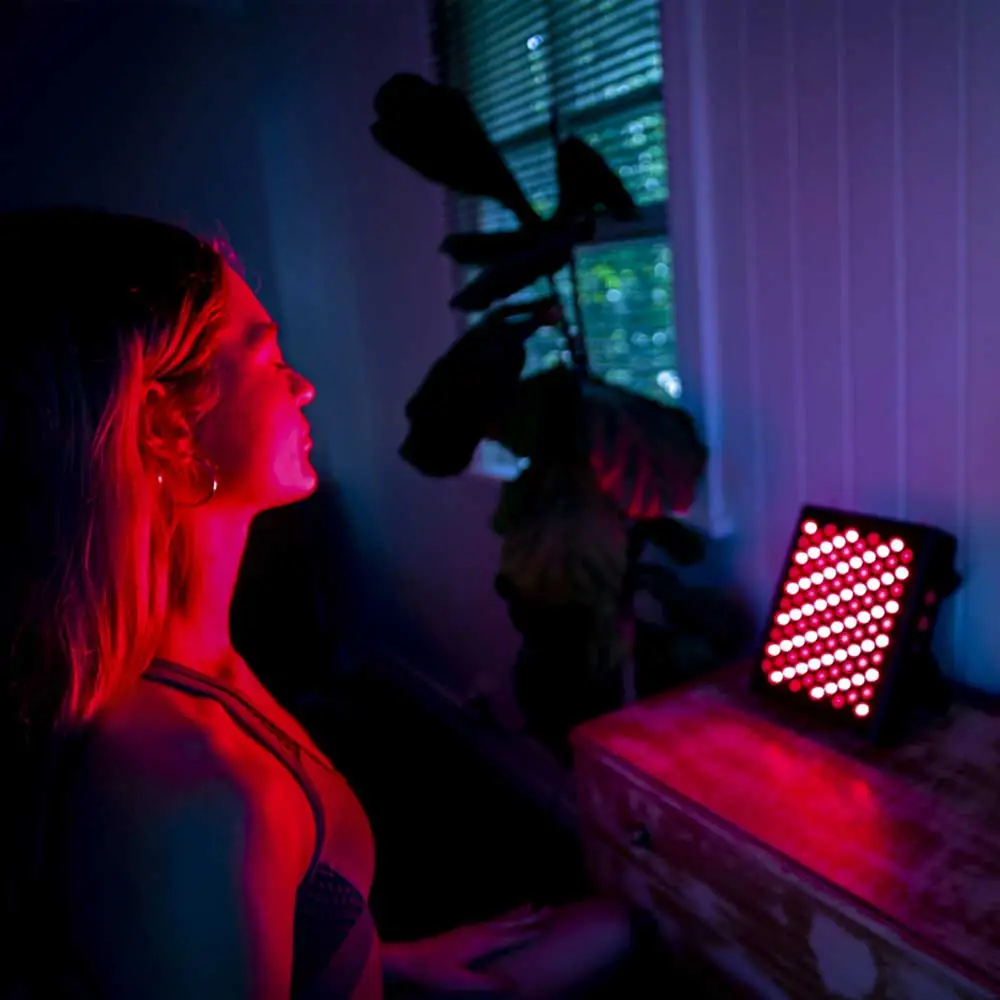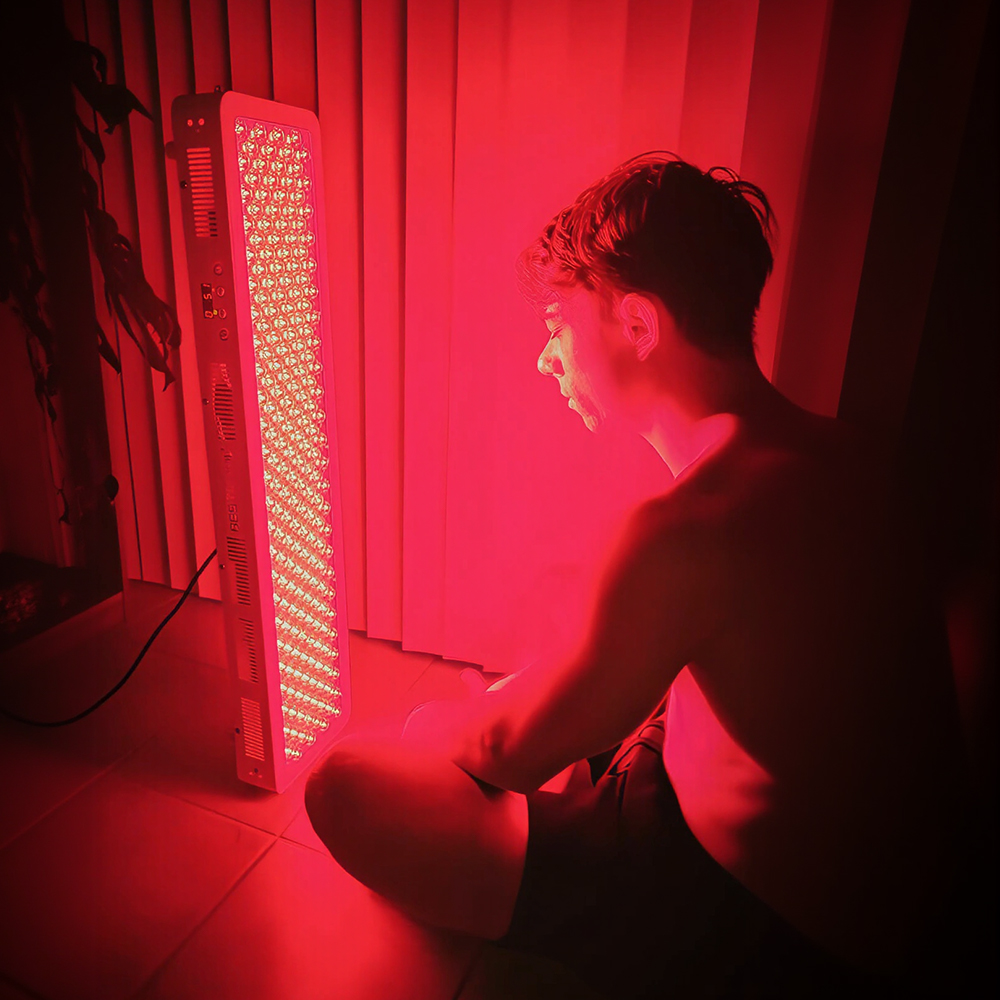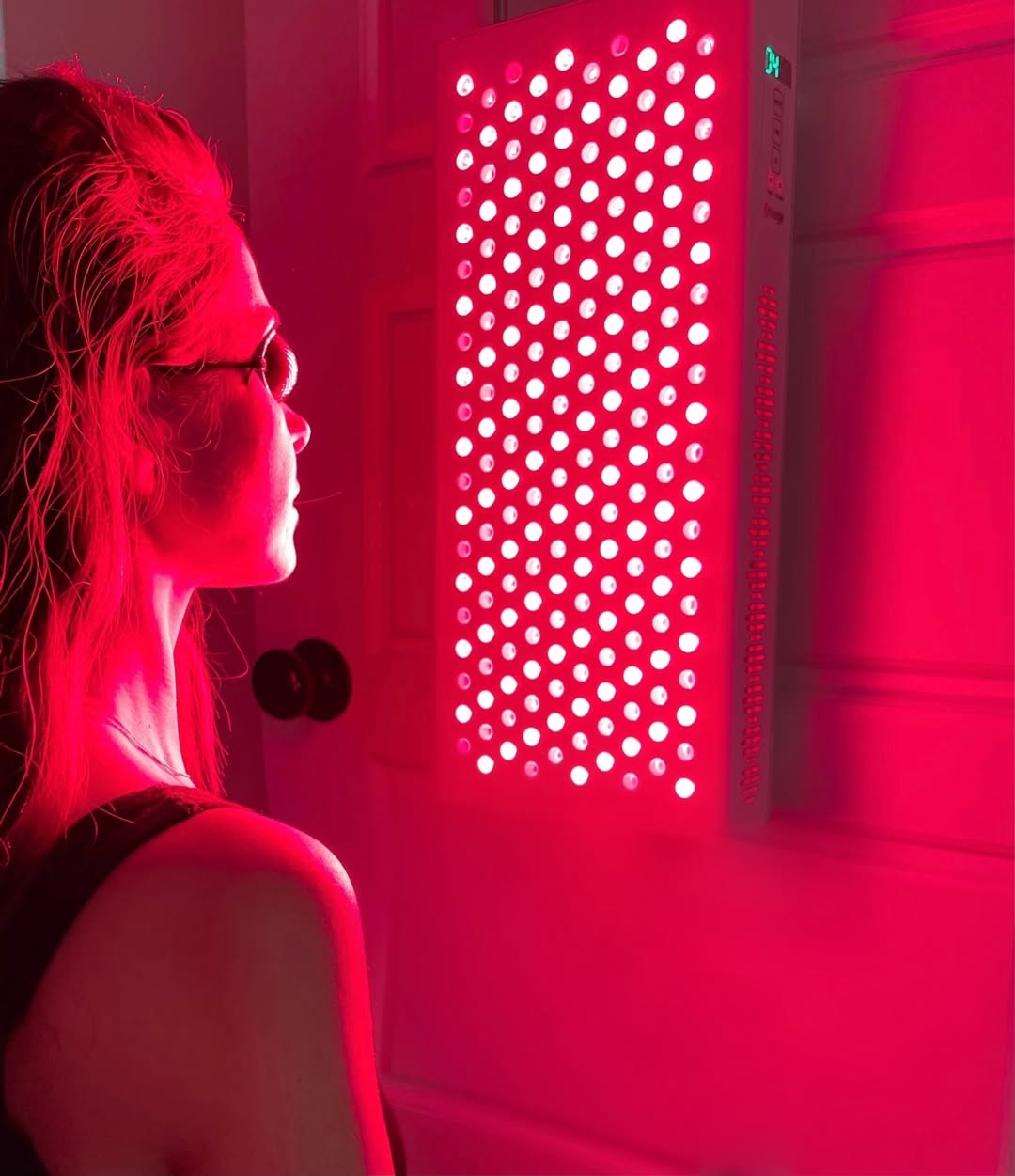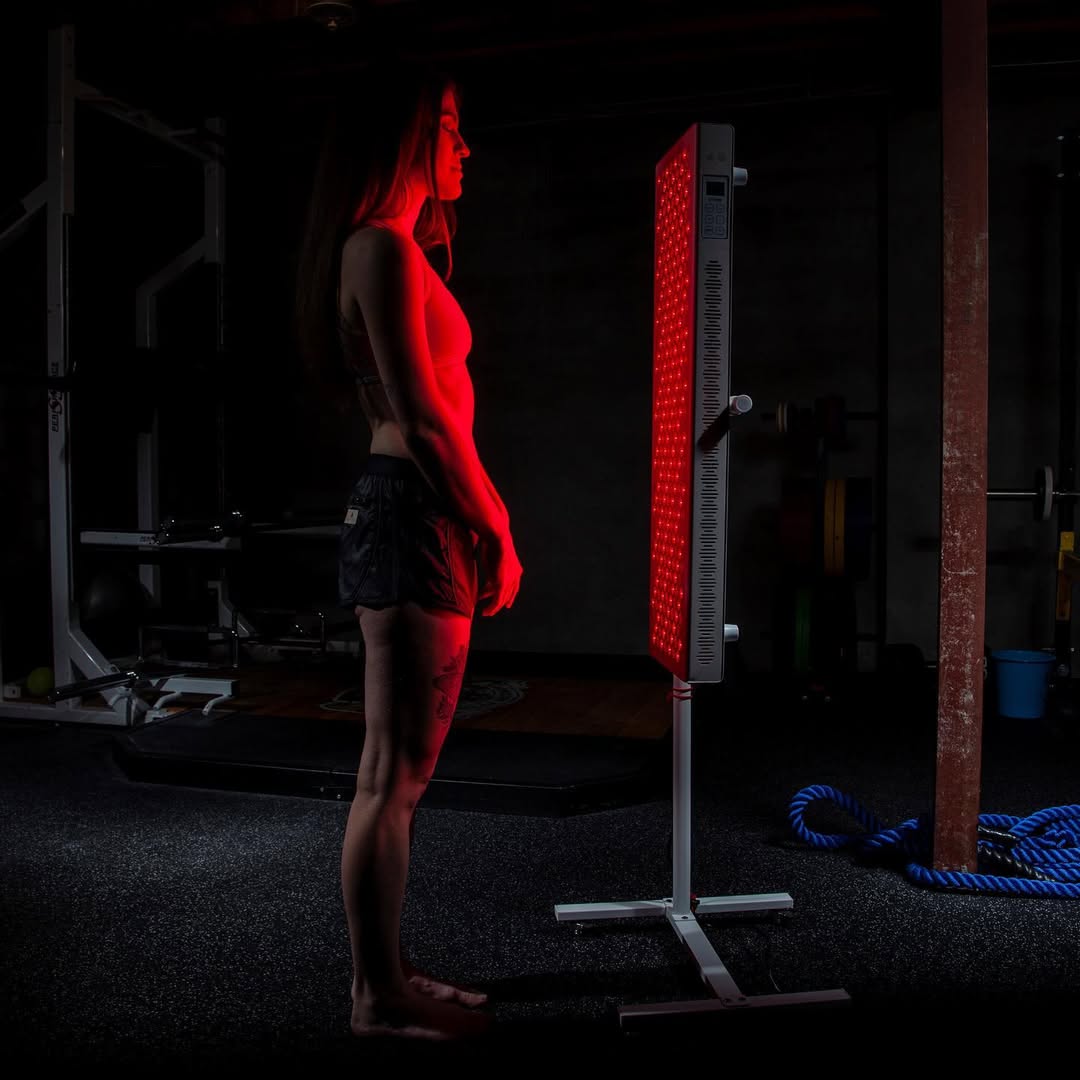![]() Free Shipping
Free Shipping ![]() Buy Now, Pay Later
Buy Now, Pay Later ![]() Eligible
Eligible
Can Red Light Therapy Help Manage Graves’ Disease Symptoms?

Graves’ disease is an autoimmune disorder that leads to the overproduction of thyroid hormones (hyperthyroidism). Symptoms can be debilitating, including anxiety, rapid heartbeat, weight loss, fatigue, and even eye problems like Graves’ ophthalmopathy. While conventional treatments like antithyroid medications, beta-blockers, and radioactive iodine therapy are commonly prescribed, many patients seek complementary therapies to alleviate symptoms.
One emerging alternative is red light therapy (RLT), also known as low-level laser therapy (LLLT) or photobiomodulation. But can this non-invasive light treatment really help manage Graves’ disease symptoms? Let’s explore the science, potential benefits, and what current research suggests.
Understanding Red Light Therapy
Red light therapy involves exposing the body to low-wavelength red or near-infrared light. Unlike UV rays, which can damage the skin, RLT penetrates tissue without causing harm. The light is absorbed by mitochondria (the energy powerhouses of cells), stimulating cellular repair, reducing inflammation, and improving circulation.
RLT has been studied for various conditions, including:
- Wound healing
- Pain relief
- Skin rejuvenation
- Muscle recovery
- Thyroid dysfunction
But how does it apply to Graves’ disease?
The Connection Between Red Light Therapy and Thyroid Health
1. Reducing Inflammation and Autoimmune Activity
Graves’ disease is an autoimmune condition where the immune system mistakenly attacks the thyroid, causing excessive hormone production. Chronic inflammation plays a key role in autoimmune diseases.
Studies suggest that red light therapy can:
- Decrease pro-inflammatory cytokines (molecules that promote inflammation).
- Increase anti-inflammatory cytokines, helping to modulate immune responses.
- Improve mitochondrial function, which may help regulate immune system overactivity.
A 2013 study published in Lasers in Medical Science found that LLLT reduced inflammation in autoimmune thyroiditis (Hashimoto’s), a condition related to Graves’. While more research is needed specifically for Graves’, the anti-inflammatory effects could theoretically help manage symptoms.
2. Supporting Thyroid Function Regulation
One of the most intriguing aspects of RLT is its potential to normalize thyroid function—whether the gland is underactive or overactive.
A 2019 study in the Journal of Lasers in Medical Sciences examined patients with hypothyroidism (underactive thyroid) and found that LLLT improved thyroid hormone levels. While Graves’ causes hyperthyroidism, some researchers believe RLT could help rebalance thyroid activity by improving cellular energy and reducing autoimmune attacks.
3. Alleviating Graves’ Ophthalmopathy Symptoms
Graves’ ophthalmopathy (or thyroid eye disease) is a common complication, causing eye bulging, dryness, pain, and vision problems. Traditional treatments include steroids, immunosuppressants, or surgery.
RLT has shown promise in reducing eye inflammation and promoting tissue repair. A 2020 study in Photobiomodulation, Photomedicine, and Laser Surgery found that near-infrared light therapy improved symptoms in patients with dry eye disease, which shares similarities with Graves’ eye symptoms.
4. Reducing Fatigue and Improving Energy Levels
Chronic fatigue is a major complaint among Graves’ patients, often due to metabolic disturbances and poor sleep. Since RLT enhances mitochondrial function, it may help:
- Boost ATP (cellular energy) production
- Improve sleep quality (by regulating circadian rhythms)
- Reduce oxidative stress, a key factor in fatigue
VELLGUS Elite V2
THE #1 RATED RED LIGHT DEVICE
VELLGUS pro V2
THE #1 RATED FULL BODY RED LIGHT DEVICE
What Does the Research Say So Far?
While the evidence is promising, most studies on RLT and thyroid health focus on hypothyroidism rather than hyperthyroidism. However, given that both conditions involve inflammation and immune dysfunction, it’s plausible that RLT could offer benefits.
Key takeaways from existing research:
✅ RLT reduces inflammation, which is crucial in autoimmune thyroid disorders.
✅ It may help regulate thyroid function by improving cellular health.
✅ It shows potential for managing Graves’ eye symptoms.
❌ More clinical trials are needed specifically for Graves’ disease.
How to Use Red Light Therapy for Graves’ Disease
If you’re considering RLT as a complementary therapy, here’s how to approach it:
1. Choose the Right Device
- Wavelength: Opt for devices emitting 630-670 nm (red light) or 810-850 nm (near-infrared) for deeper tissue penetration.
- FDA-cleared devices: Look for medically approved panels or handheld devices.
2. Target the Thyroid Gland
- Apply the light directly to the neck (thyroid area) for 5-10 minutes per session.
- Some practitioners recommend alternating between the thyroid and thymus gland (located in the chest) to modulate immune function.
3. Consistency is Key
- Start with 3-5 sessions per week, then adjust based on response.
- Effects may take weeks to months to notice, similar to other natural therapies.
4. Combine with Other Therapies
RLT works best alongside:
- Anti-inflammatory diet (rich in selenium, zinc, omega-3s)
- Stress management (yoga, meditation)
- Conventional treatments (as advised by your doctor)
Potential Risks and Considerations
RLT is generally safe, but:
- Avoid overuse (excessive exposure may cause skin irritation).
- Consult your doctor before starting, especially if on thyroid medications.
- Monitor symptoms—while some report improvements, others may not respond as strongly.
Final Thoughts: Is RLT Worth Trying?
While red light therapy isn’t a cure for Graves’ disease, its anti-inflammatory, immune-modulating, and energy-boosting effects make it a compelling adjunct therapy. Early research and anecdotal reports suggest it could help manage symptoms like fatigue, eye discomfort, and inflammation.
If you’re struggling with Graves’ and looking for natural support, RLT may be worth exploring—under medical supervision. As science advances, we may see more definitive answers on its role in thyroid health.
Have you tried red light therapy for Graves’ disease? Share your experiences in the comments!
References:
- Hamblin, M. R. (2017). “Mechanisms and applications of the anti-inflammatory effects of photobiomodulation.” AIMS Biophysics.
- Hofling, D. B. (2013). “Low-level laser therapy in chronic autoimmune thyroiditis.” Lasers in Medical Science.
- Salehpour, F. (2019). “Effects of photobiomodulation on thyroid hormone levels in hypothyroidism.” Journal of Lasers in Medical Sciences.








